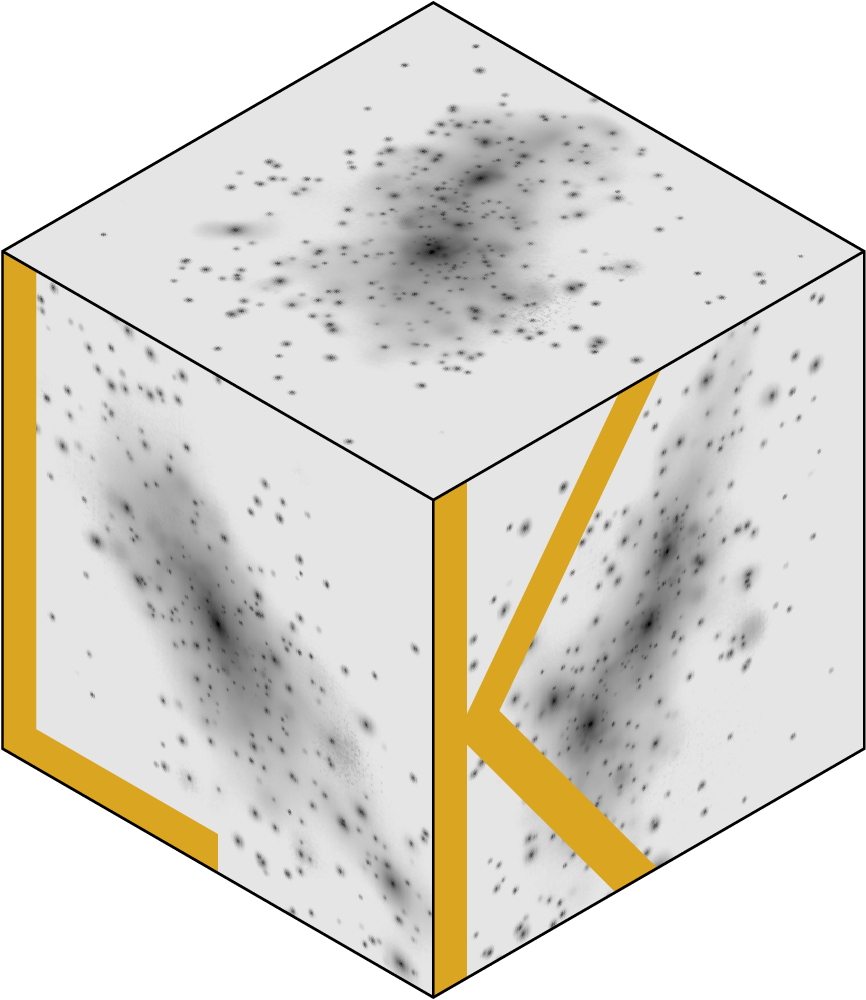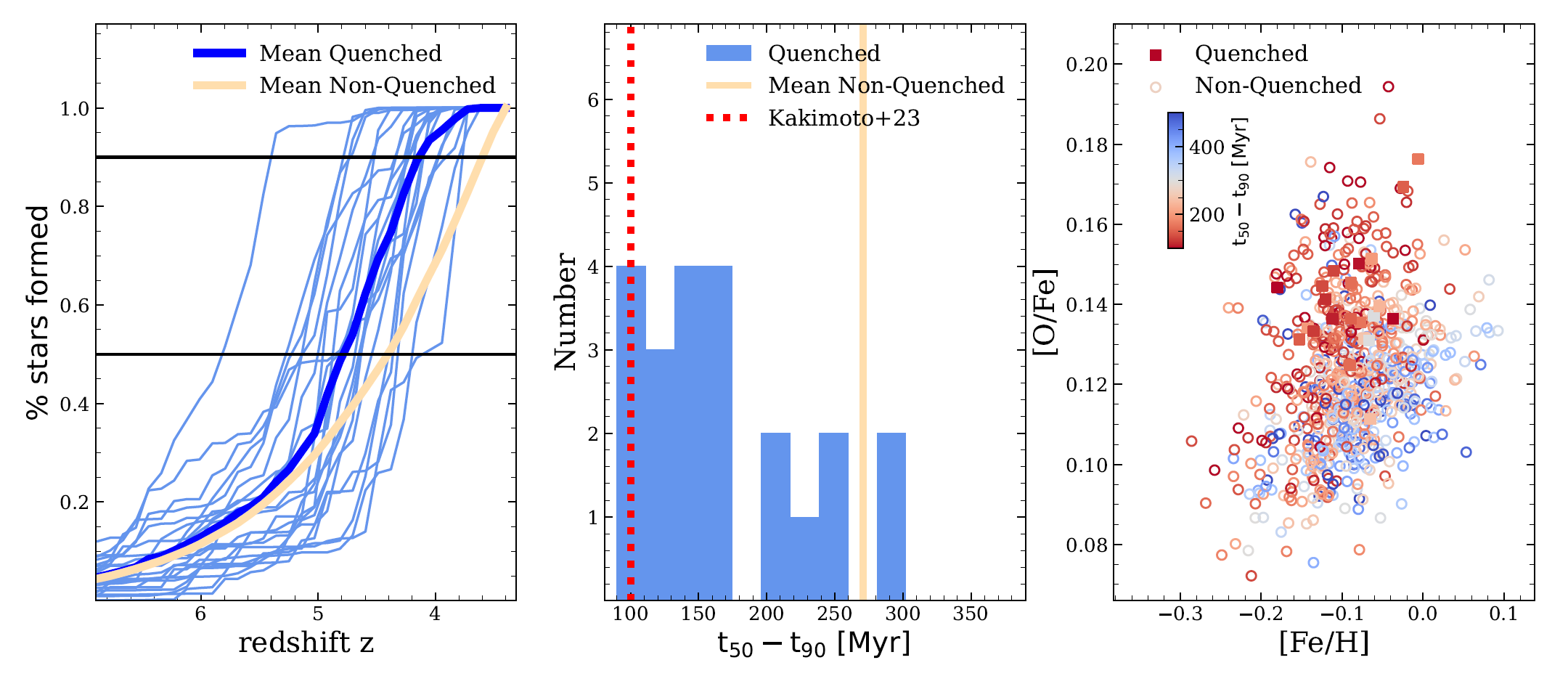 Lucas Kimmig
Lucas Kimmig

Quenched Galaxies at Cosmic Dawn
Observations with JWST have recently revealed a substantial number
of galaxies at redshifts higher than z = 3 that
are already quenched of star formation while their stellar masses
are larger than 1010Msun.
Such galaxies are a challenge to our understanding of structure
formation, as the well established quenching mechanisms for massive
galaxies at low redshift require longer timescales than the age the
Universe has at this point in time.
Using the high-resolution large volume of the
Magneticum simulations I show
that a large simulation volume with high resolution is required to
reproduce such massive quenched galaxies at high redshifts in similar
volume densities as observed.
Furthermore, I show that these galaxies undergo a massive starburst,
forming nearly half of their stars within 100–200 Myr,
before they are very quickly quenched by their combined stellar and
AGN feedback.
However, interestingly these quenched galaxies all reside in rather
underdense environments, contrary to typical quenched galaxies at
low redshifts.
I demonstrate that this is necessary for the quenching at high
redshifts to be efficient:
at such high redshifts, in dense environments the cold gas can still
funnel back from the cosmic web to the galaxy after an AGN outburst
as the hot halos have not yet been fully established, so galaxies in
dense environments rekindle their starformation quickly.
Only in underdense environments the inflow of gas is suppressed
sufficiently enough for a longer lasting quiescence.
Finally, I show that the rapid star formation of these quenched
galaxies causes a strong alpha enhancement in the metallicity content
of the stars, as the 200 Myr timeframe is too short for significant
enrichment of the gas by Type Ia supernovae.
In a companion study, we furthermore analyzed the future development
of the quenched galaxies in our simulations.
We showed that about 20% of the galaxies are accreted onto a more
massive structure by z = 2, while from the remaining
80% 1/3 stays quenched, 1/3 rejuvenates, and the others rekindle to
a low rate in star formation.
Those galaxies that rejuvenate can actually return to the star forming
main sequence, however, they form most of their stars at radii between
1 and 3 halfmass radii.
Overall, we find that the quenched galaxies at cosmic dawn tend to
not end in the most massive clusters at z = 0, but
rather stay in less dense environments, most of them ending in
group-mass or smaller halos.
|